
On mission mode, Railways has pulled freight traffic ahead of last year’s level inspite of Covid-19 related challenges.
Average speed of freight trains on July 27 was more than double as compare to last year for the same date.
In whole of July, the average speed of freight trains around double as compare to last year for the same month.
On July 27, the freight loading was 3.13 million tons which is higher than last year for the same date.
Faster freight
The average speed of freight trains on July 27 was 46.16 kmph which is more than double as compare to last year for the same date (22.52 kmph).
In the month of July the average speed of freight trains is 45.03 kmph which is around double as compare to last year for the same month (23.22 kmph).
West Central Railway with the average speed of 54.23 kmph, Northeast Frontier Railway with the speed of 51 kmph, East Central Railway 50.24 kmph, East Cost Railway 41.78 kmph, South East Central Railway 42.83 kmph, South Eastern Railway 43.24 kmph and Western Railway with the speed of 44.4 kmph are the leading Railway Zones in the average speed of freight train in Indian Railways.
On July 27, total freight loading was 3.13 mt which is higher than last year for the same date.
On that day, a total of 1039 of rakes loaded with freight in Indian Railways which includes 76 rakes of foodgrain, 67 rakes of fertilizer, 49 rakes of steel, 113 rakes of cement, 113 rakes of iron ore and 363 rakes of coal were handled.
Diese Geschichte stammt aus der August 2020-Ausgabe von Steel Insights.
Starten Sie Ihre 7-tägige kostenlose Testversion von Magzter GOLD, um auf Tausende kuratierte Premium-Storys sowie über 8.000 Zeitschriften und Zeitungen zuzugreifen.
Bereits Abonnent ? Anmelden
Diese Geschichte stammt aus der August 2020-Ausgabe von Steel Insights.
Starten Sie Ihre 7-tägige kostenlose Testversion von Magzter GOLD, um auf Tausende kuratierte Premium-Storys sowie über 8.000 Zeitschriften und Zeitungen zuzugreifen.
Bereits Abonnent? Anmelden

Steel's Net Zero mission
The country’s commitment to achieving Net Zero within a targeted timeframe will now propel its steel sector towards a sustainable future in line with global trends.
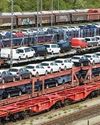
Fuel Price Hike, Supply Chain Disruption Hurt Festive Sales
Supply chain disruptions and fuel price hikes have hurt festive sales in a big way as most auto majors posted decline in sales in October.
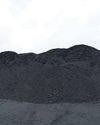
Seaborne coking coal offers remain range-bound
Seaborne coking coal offers moved in a narrow range in October amid global supply tightness and healthy spot demand.
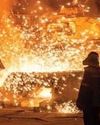
Global crude steel output down 8% in September
China manufactured 74 mt in September, fall of 21% y-o-y while India’s production went up by 7% to 10 mt.
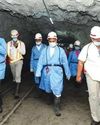
MOIL embarks on expansion projects
“Even though our country is blessed with manganese ore reserves, we import 50% of the domestic requirement. We have to lower our import dependence and save precious foreign exchange.” Ram Chandra Prasad Singh, Steel Minister

Iron ore handled by major ports down 17% in H1
The 12 major Indian ports handled 27 mt of iron-ore during H1 of 2021, down by 17% from 33 mt recorded for the corresponding period of previous year.
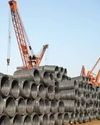
Shrinking China output to boost India exports
“In the third quarter of 2021, the company actively responded to the pressure from external policies, such as production curtailment and dual control system on energy consumption and intensity, as well as coal resource shortage and surging prices.” Baoshan Iron and Steel Co Ltd
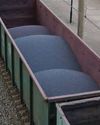
Indian Railways' iron-ore handling up 25% in H1
Indian Railways in April-September of 2021 (H1) transported 84 mt of iron ore, up by 25% over 67 mt during April-September 2020.
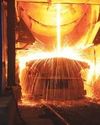
September crude steel production up 7.2% y-o-y
India’s crude steel production in September 2021 grew 7.2 percent to 9.547 million tons (mt) over September 2020 but was down by 3.2 percent from August 2021 output, provisional steel ministry data showed.

“Five enablers: way forward to sustainable cleaner steel”
Right and scalable technology, appropriate policy guidance by government, access to finance to fund transition, willingness of customers to pay for cleaner products and infrastructure for use of new technologies are the need of the hour for the sustainable and cleaner steel industry, according to Madhulika Sharma, Chief Corporate Sustainability, Tata Steel.